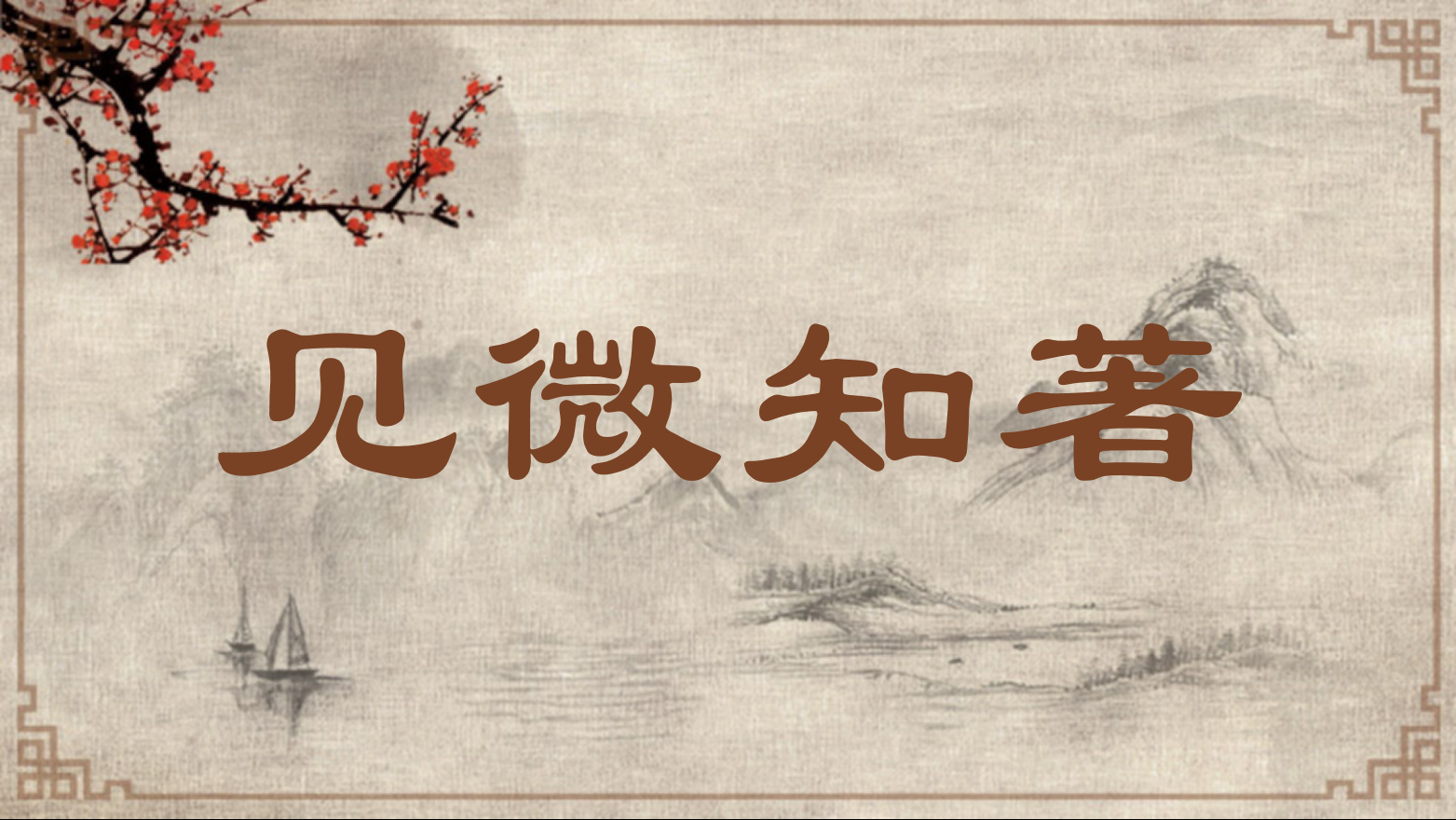见微知著 Learning About What Is Forthcoming by Observing Tiny Clues

发现细微苗头,就能知道事物的演变趋势或整体状态。“微”即隐微、不明,指事物尚处于不易被察觉的潜在状态;“著”即显著、明显,指事物的本质已经充分显现或事物的发展已处于充分展开的状态。任何事物都有一个由隐而显、由小变大的过程,还可能引发其他连锁反应。做任何事情,都要深刻认识、精准把握事物演变的内在规律,既要着眼全局,又要关注细微处,提前防范可能出现的差错、问题,保障行动顺利进行。其中隐含着对于科学认知的诉求。
By finding tiny signs of change, one is able to learn about trends and developments in the status of things. Tiny things are unobtrusive and hard to notice. But they may later cause very obvious consequences. Everything goes from being hidden to being conspicuous, and from small to large, and other chain reactions may occur in the process. So when doing something, we should fully understand and carefully handle its dynamics. We should see both the big picture and small details, get ready early to address any errors and problems that may arise, and ensure success of the undertaking. This also calls for gaining a good understanding of science.
引例 Citation:
◎ 故圣人见微知著,睹始知终。(袁康《越绝书》卷十四)
所以圣人看到细微的苗头,就能知道事物的演变趋势或整体状态;看到事物的初始情况,就能知道它最终会有什么样的结果。
Therefore, when the sage sees tiny clues, he knows what is forthcoming; when he observes the beginning, he knows the end. (Yuan Kang: History of Yue)
推荐:教育部 国家语委
供稿:北京外国语大学 外语教学与研究出版社
责任编辑:钱耐安





